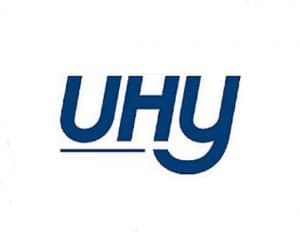Bank lending to the private sector in the US has stagnated in the last year, down by 0.13% in real terms, and continuing to fall behind the rest of the G7, according to a new study by UHY, an international accountancy network.
 UHY warns that the figures show that for the US’s small businesses in particular, the credit crunch lingers on. The network says in the US, modest expansions in lending in last the last year have been wiped out by inflation. Over the four years since the depths of the global recession*, the volume of lending to the private sector in the US has declined by -4.74% in absolute terms.
UHY warns that the figures show that for the US’s small businesses in particular, the credit crunch lingers on. The network says in the US, modest expansions in lending in last the last year have been wiped out by inflation. Over the four years since the depths of the global recession*, the volume of lending to the private sector in the US has declined by -4.74% in absolute terms.
UHY explains that the US was at the epicenter of the financial crash of 2008, but there are now signs that the economic recovery is strengthening and with it, the demand for lending. Federal Reserve data show that the volume of bank loans and leases in the second quarter of 2014 saw their biggest increase since 2008, largely driven by business loans.
The US is one of many developed countries that have seen a stagnation in bank lending to the private sector, with lending in the G7 economies increasing by an average of just 0.1% in real terms.
UHY adds that the other countries most affected by the continued fall in bank lending since the depths of the recession were those hit hardest by the banking crisis, including Spain, Ireland and Italy. Others such as Australia and Canada, which escaped the global recession, have fared much better.
Howard Foote, financial services partner with UHY LLP in the USA says: “Nearly six years on from the start of the banking crisis, we are still seeing virtually no increase in bank lending in the US.”
“This continued drought in bank lending in developed economies is not just a question of appetite – it’s about regulation. Anxious to prevent a repetition of the banking crisis, regulators now require banks to hold more capital against their activities, and that is making lending more expensive.”
“But there are some positive signs from the US that volume of bank lending to the private sector is starting to recover. While commercial lending to large corporations has been increasing gradually for several years, there is now increased demand amongst small and medium enterprises (SMEs) too.”
Smaller businesses hardest hit, as funding problems continue despite recovery
UHY says that the continued slump in lending in the US has hit smaller businesses the hardest, as bigger companies have been able to access the bond markets to fill the gap in funding.
The volume of corporate bond issuance in the US has increased by 44% in the last four years. In other major markets such as the UK, lending through corporate bonds has increased by 35% over the last four years, while in France it has increased by 35%.
Foote stated, “Corporate bonds have long been a good way for larger companies to get the funding they need, but as bank lending has dried up, they have now become a vital tool. Smaller businesses don’t have the same luxury, as issuing bonds can be quite costly in terms of advisory and other fees.”
“Efforts to create a bond market to help SMEs, while welcome, will come far too late for this economic cycle. Although the recovery is now taking hold in some developed economies, problems over bank funding are far from over. Many banks are still unable to lend, especially to smaller businesses, leaving them facing a hidden credit crunch.”
UHY says that many companies outside the US find that available bank finance is too expensive, with lending margins too high. This leaves businesses struggling to find appropriate finance to deal with cash flow problems or make capital investments.
Foote says, “Demand for loans is increasing, but the banks are generally not granting new requests unless they are from existing customers with a good track record and security. That’s leaving many smaller businesses that have struggled through the recession but are now on a more stable footing, still out in the cold.”
UHY adds that although new, alternative forms of finance such as crowd-funding have been gaining traction, these are unlikely to provide an adequate solution for most established businesses. Invoice financing, which is growing in popularity, may be more appropriate, however it is unlikely to be able to fill the gap.
In contrast, in many major emerging economies, bank lending continues to soar, with the so-called BRIC nations (Brazil, Russia, India, China) leading the way. Brazil has seen bank lending to the private sector jump 115% since 2009, and lending in China has risen 112%.
UHY points out that even though with the exception of China, inflation in the BRIC economies was high, lending growth remained very substantial even in real terms (see table below). The average lending growth across all four countries in 2013 was 18.1%. In China, lending expanded by 21.4% in the last year, and inflation was relatively moderate at 2.6%.
Ladislav Hornan, Chairman of UHY, says, “Bank lending in emerging markets, which has surged since the global recession, still shows no signs of abating. While typically banks have been comfortable with their emerging markets lending because overall levels of indebtedness are relatively low, there are now growing concerns about whether debt levels in China are sustainable, and what the impact on other countries will be should there be a credit crisis there.”

